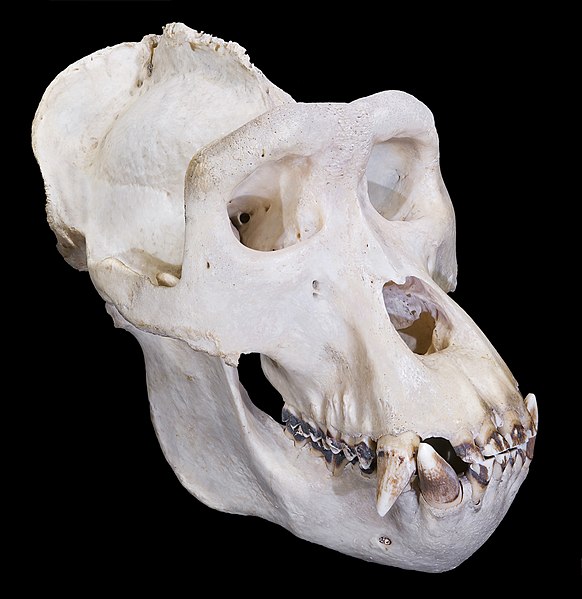Gorillas are herbivorous, predominantly ground-dwelling great apes that inhabit the tropical forests of equatorial Africa. The genus Gorilla is divided into two species: the eastern gorilla and the western gorilla, and either four or five subspecies. The DNA of gorillas is highly similar to that of humans, from 95 to 99% depending on what is included, and they are the next closest living relatives to humans after chimpanzees and bonobos.
Gorilla
Male gorilla skull
Western gorilla (Gorilla gorilla) and eastern gorilla (Gorilla beringei)
Young gorilla climbing
A herbivore is an animal anatomically and physiologically adapted to eating plant material, for example foliage or marine algae, for the main component of its diet. As a result of their plant diet, herbivorous animals typically have mouthparts adapted to rasping or grinding. Horses and other herbivores have wide flat teeth that are adapted to grinding grass, tree bark, and other tough plant material.
A deer and two fawns feeding on foliage
A sawfly larva feeding on a leaf
Tracks made by terrestrial gastropods with their radulas, scraping green algae from a surface inside a greenhouse
A fossil Viburnum lesquereuxii leaf with evidence of insect herbivory; Dakota Sandstone (Cretaceous) of Ellsworth County, Kansas. Scale bar is 10 mm.








